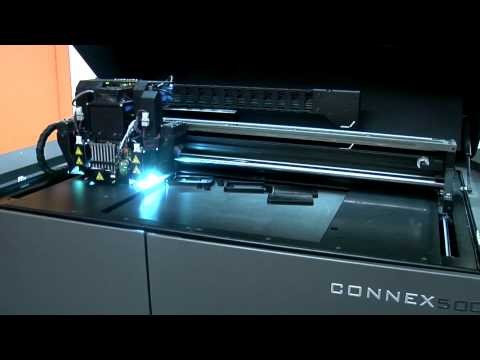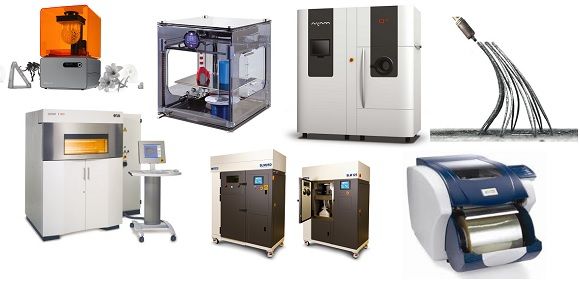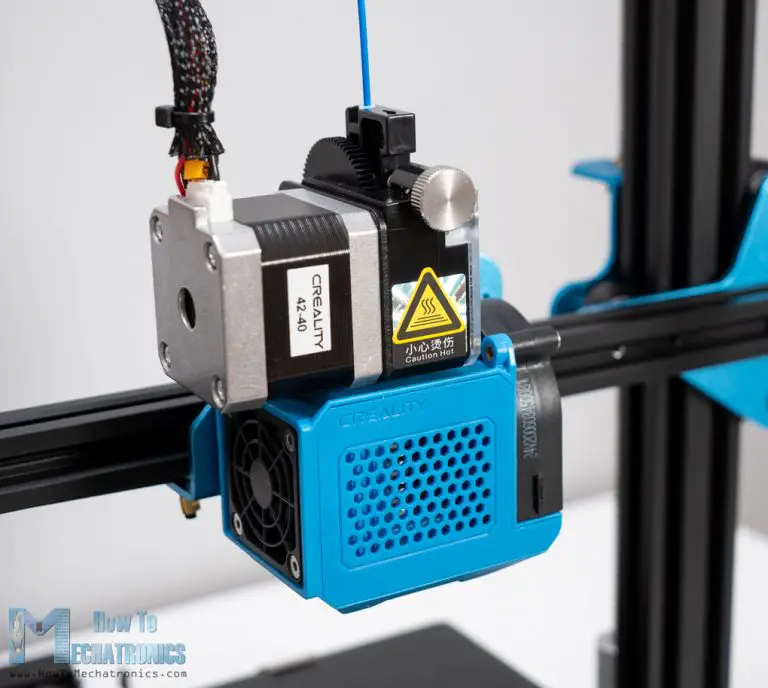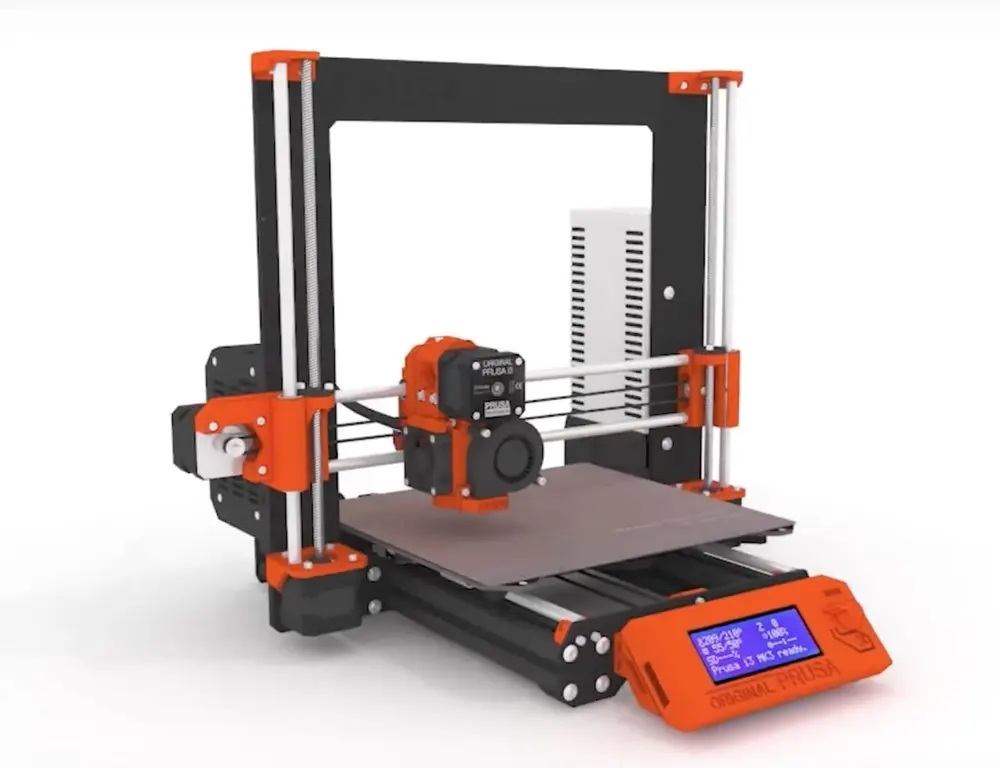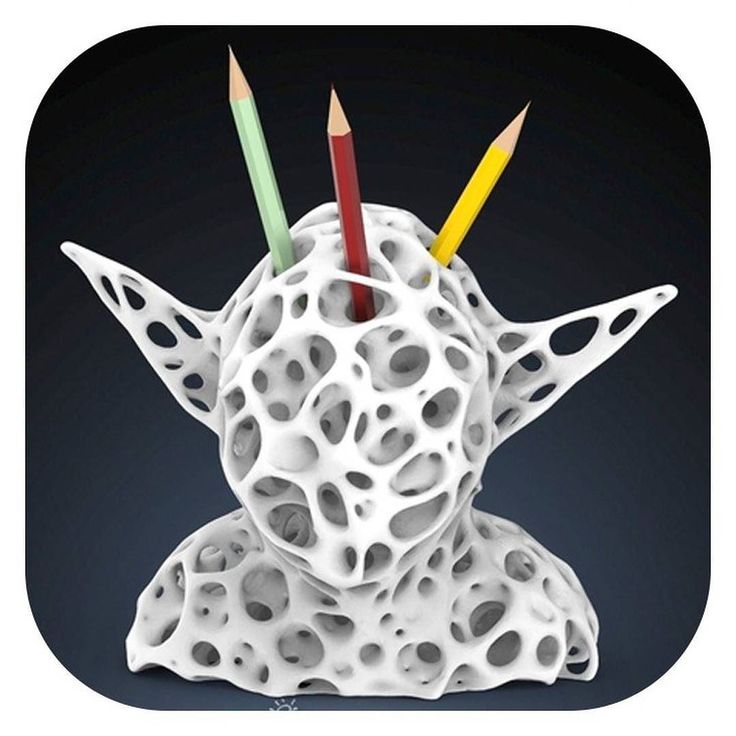Objet polyjet 3d printing technology
PolyJet Technology used for 3D Printing on a Stratasys Objet Machine
- Support
- Search
Discover the PolyJet Technology
Realistic Colour Multi-material 3D Printing
What is PolyJet?
PolyJet is a powerful 3D printing technology that produces smooth, accurate parts, prototypes and tooling.
With microscopic layer resolution and accuracy down to 0.1 mm, it can produce thin walls and complex geometries using the widest range of materials available with any technology.
Advantages of PolyJet Technology
Why prototype with a Stratasys PolyJet Machine
Proven Technology
Stratasys PolyJet 3D Printers are based on proven technology, which creates precise prototypes that set the standard for finished-product realism. Their fine resolution makes complex shapes, intricate details and smooth surfaces possible.
Advanced 3D Printing
PolyJet 3D Printing works by jetting layers of liquid photopolymer onto a build tray and instantly curing them with UV light. The fine layers build up to create a precise 3D model or prototype. Models are ready to handle right out of the 3D printer, with no post-curing needed.
Better ideas, easier sell
Stratasys PolyJet 3D Printers improve communication and collaboration because they produce amazingly accurate representations of your ideas that you can share with your team and your clients for a faster, more confident buy-in.
PolyJet 3D Printers
A range of Objet machines from Stratasys
3D Printer
Stratasys J850 / J835 / J826
The Stratasys J8 Series 3D printers deliver full PANTONE colour capability including texture mapping and colour gradients for realistic prototyping.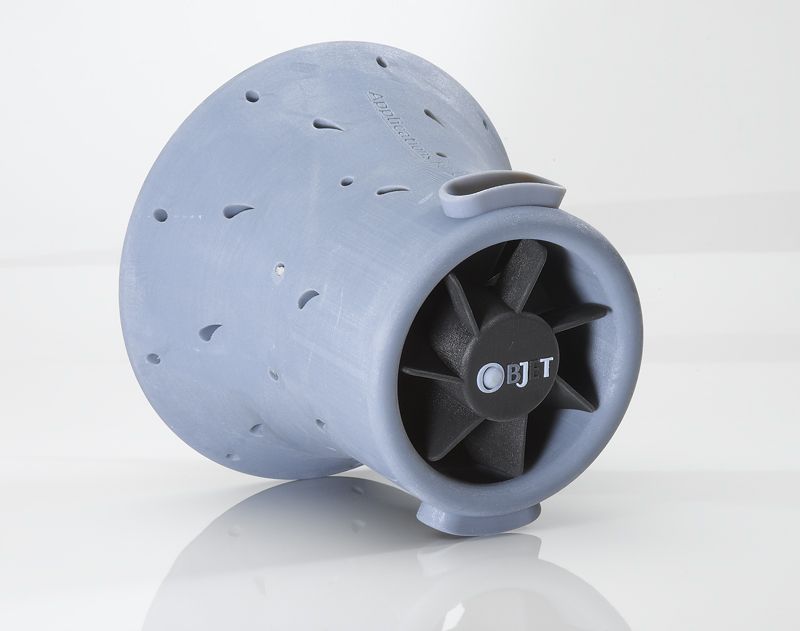
3D Printer
Stratasys J826
Based on J850 technology, the Stratasys J826 supplies the same end-to-end solution for the design process and ultra-realistic models at a lower price point.
3D Printer
Stratasys J750 Digital Anatomy
The Stratasys J750 Digital Anatomy 3D Printer brings medical models to life with incredible realism, accurately representing the appearance and response of human tissue.
3D Printer
Stratasys J750 / J735
The Stratasys J750 and J735 3D Printers deliver unrivaled aesthetic performance including true, PANTONE colour capability with texture mapping and colour gradients.
3D Printer
Stratasys J55
The Stratasys J55 3D printer offers designers with unparalleled full colour part realism, in an office or studio environment, at an affordable price.
3D Printer
Stratasys J35 Pro
Stratasys J35 Pro is an affordable PolyJet Multi-material Desktop 3D Printer. Produce jigs, fixtures, functional parts, prototypes and concept models.
3D Printer
Objet350/500 Connex3
The Objet350/500 Connex3 are able to combine vivid colour and multiple materials, to simulate the precise look, feel and function of finished products.
3D Printer
Objet30 Pro
The Objet30 Pro combines the accuracy and versatility of a high-end rapid prototyping machine with the small footprint of a regular desktop 3D printer.
3D Printer
Objet30 Prime
The Stratasys Objet30 Prime 3D prints from your desktop, with twelve material options including rubber, high-temperature and bio-compatible.
3D Printer
Objet260 Connex3
The Objet260 Connex is a colour, multi-material 3D printer compact enough for office use, which now makes colour 3D Printing more accessible to designers.
3D Printer
Objet1000 Plus
Create large or small production tools and full-scale prototypes with the Objet1000 Plus 3D Printer. Maximize your productivity and quickly achieve ROI.
3D Printer
Objet Eden260VS
Backed by PolyJet™ technology, the Objet Eden260VS™ features a soluble support option that empowers you to easily produce delicate and complex models.
PolyJet Materials
Multiple colours, textures and forms
PolyJet Material
Agilus 30
Agilus 30 is a PolyJet Photopolymer 3D printing material with superior tear-resistance, capable of withstanding repeated flexing and bending.
PolyJet Material
Bio-compatible (MED610)
Bio-compatible PolyJet photopolymer (MED610) is a rigid medical rapid prototyping material, featuring high dimensional stability and colourless transparency
PolyJet Material
Digital ABS Plus
Digital ABS Plus™ is designed to simulate standard ABS plastics for better impact strength with high-temperature resistance, toughness and superior finish.
PolyJet Material
DraftGrey
Stratasys DraftGrey is a rigid PolyJet 3D printing material used exclusively with the Super High Speed print mode for concept modeling.
PolyJet Material
Elastico
Stratasys PolyJet Elastico 3D Print Rubber Material for Prototypes that can simulate products requiring soft-touch, flexible qualities.
PolyJet Material
High Temperature (RGD525)
Stratasys High Temperature PolyJet 3D printing material is ideal for thermal testing prototypes that require hot-air or hot-water flow.
PolyJet Material
PolyJet Support (SUP705, 706, 707)
Gel-like PolyJet support materials designed to uphold overhangs and complicated geometries during the 3D printing process. Easily removed by hand or water.
PolyJet Material
Rigid Opaque (Vero)
Rigid Opaque (Vero) multi-purpose, multi-colour photopolymers offer strength, stiffness and versatility in blue, white, black, gray, cyan, magenta & yellow.
PolyJet Material
Rigid Translucent (RGD720)
Rigid Translucent (RGD720) is a multipurpose PolyJet photopolymer for translucent plastic simulation, featuring high dimensional stability with surface smoothness.
PolyJet Material
Rigid Transparent (VeroClear)
Stratasys VeroClear is a rigid transparent material that simulates PMMA (polymethyl methacrylate), commonly known as acrylic, used as an alternative to glass .
PolyJet Material
Rubber-like (Tango & TangoPlus)
Prototypes 3D printed in Stratasys Rubber-like Tango and Tango Black Plus can simulate products requiring soft-touch, flexible qualities.
PolyJet Material
Simulated Polypropylene (Rigur & Durus)
Rigur & Durus are advanced simulated polypropylene materials for 3D printing precision prototypes.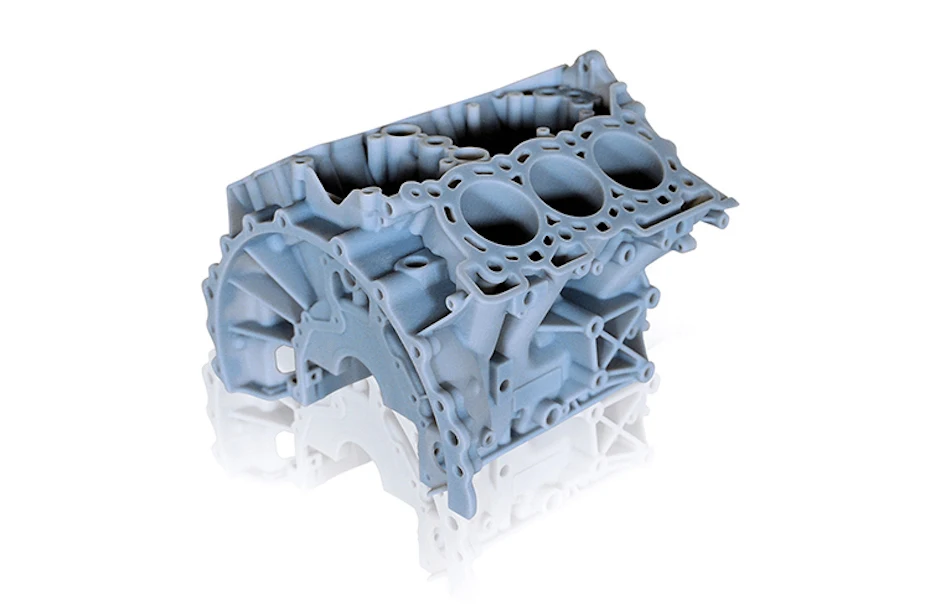 Both offer durability and beautiful surface finish.
Both offer durability and beautiful surface finish.
PolyJet Material
VeroFlex
Stratasys VeroFlex rigid photopolymer material offers a flexibility for rapid prototyping eyewear. Get realistic prototypes in a wide range of colours and textures
PolyJet Material
VeroUltra
Stratasys VeroUltra a rigid colour 3D printing opaque material significantly improves the colour opacity and uniformity of 3d printed parts.
PolyJet Material
VeroUltraClear
Stratasys VeroClear is a rigid transparent material that simulates PMMA (polymethyl methacrylate), commonly known as acrylic, used as an alternative to glass .
PolyJet Technology Benefits
Stratasys makes it simple to build high-quality, accurate 3D models.
Wide range of material properties
PolyJet Technology boasts the widest range of material properties for its class, from rigid to flexible, transparent to opaque, neutral to vibrant, standard to bio-compatible and durable to high temperature.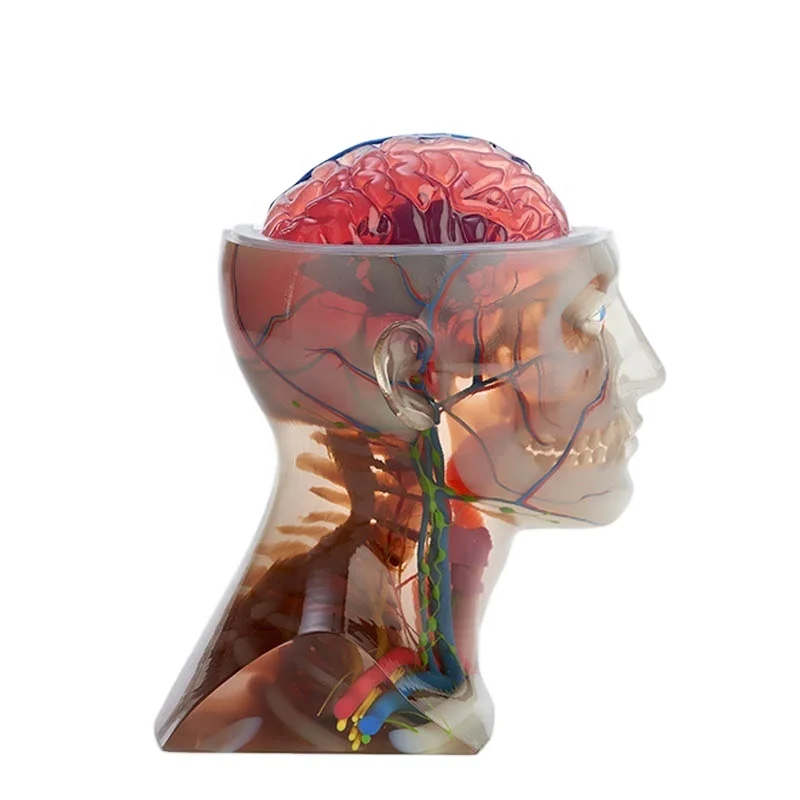
With PolyJet, incorporate dozens of colours into one prototype, from vivid opaque to stained glass-like translucent, with hundreds of blended hues in between.
Prototype Parts
Enjoy building prototypes with fine feature quality – including 16-micron high resolution – that provides high detail and smooth surfaces to create brilliant, precise 3D models that will wow your audience.
3D print custom jigs, assembly fixtures and gauges and tooling with ultra-fine accuracy and smooth surfaces quickly and easily – no assembly required for parts with multiple materials.
Print complex & delicate features
Along with the selected model material, the 3D printer features two support material options: SUP705, removed with a WaterJet; and SUP706, which is easily removed and soluble for automated post-processing and increased geometric freedom to print complex and delicate features and small cavities.
3D Printing Success
Learn how manufacturers are using Stratasys PolyJet Technology
Take a look at the video to see five of the most popular applications and uses for PolyJet Technology.
Including fast, effective blow molding tools, more efficient injection molding tools, rubber-like fixtures, grips and over-molding, vibrant colour prototyping, and more.
Example Parts
Take a look at example models created with the PolyJet Technology:
High Temperature tap fitting
Digital Abs injection mold group
Digital Material automotive fit gauges
Digital Material handle
Digital Material razors
Transparent engine
Digital Material helmet
High Temperature car vent
Digital Material yoyo
Get your CAD model 3D printed with PolyJet Technology
Javelin 3D Printing Service
We provide designers and manufacturers with a variety of 3D printing services, to create custom high-performance prototypes, tooling, manufacturing aids, end-use parts, and low-volume production.
By applying PolyJet Technology, our staff of highly-experienced specialists are capable of meeting the most stringent demands in terms of time, cost and precision in the creation of your part.
Is PolyJet Technology right for you?
Call us free at 1-877-219-6757 and get your questions answered
Home › Manufacture › PolyJet Technology
Who we are and what we do
We are Canadian experts in 3D and have enabled thousands of companies to aim high with SOLIDWORKS solutions for 3D Design, Data Management & Workflow, Manufacturing & 3D Printing.
No matter the size of your business, we have the skills and experience to propel your organization to new heights.
Subscribe to our Newsletter
Get the latest 3D Technology News and Events by subscribing to our Tech Newsletter
NOTE: By subscribing you are granting permission to receive news and promotion emails from us, you can unsubscribe at any time. View our privacy policy
© 1997 - 2022. All Rights Reserved by Javelin Technologies Inc.
All Rights Reserved by Javelin Technologies Inc.
Privacy Policy | Accessibility Policy | Terms of Use
Call 877-219-6757 / 905-815-1906
Office Locations: Ontario·Manitoba·Alberta·British Columbia
What is the Polyjet process in 3D Printing? Pros and Cons
The transformative power of 3D printing is undeniable. The use of 3D printing is rapidly growing in prototyping and design. Hence, it’s no surprise that 3D printing technology is also evolving to meet these demands that increase the usefulness and efficiency of this technology.
Polyjet Technology is a full-color 3D printing technology that combines the strengths of both plastic and powder-based technologies. Additionally, it delivers the best hybrid of power, speed, quality, reliability, and flexibility in one print. So, if you are looking for that extra edge for your prototype in terms of materials, aesthetics, and accuracy, Polyjet is the way to go.
So, if you are looking for that extra edge for your prototype in terms of materials, aesthetics, and accuracy, Polyjet is the way to go.
Read on to learn everything about this innovative 3D printing technology for your current or future projects.
What is Polyjet?Polyjet is a 3D printing technique and a patented invention of Stratasys. It is an additive manufacturing system. However, it works quite differently from other printing technology.
The Polyjet print head uses liquid photopolymers to create your models. It is similar to a regular inkjet printer. The difference, instead of ink on paper, Polyjet prints layer upon layer of the photopolymers on the build tray.
Polyjet printers can be as accurate as 0.1mm to create the smoothest surfaces and thinnest walls. Thus, making them ideal for producing prototypes with complex geometries. Furthermore, only Polyjet allows you to mix different materials. In short, you can combine rigid materials with flexible ones in the same print run.
Polyjet also supports an extensive range of colors and material combinations to produce incredibly realistic prototypes.
Photo by Jonathan Borba on UnsplashHow Does Polyjet 3D Printing Work?
The Polyjet printing process typically has three main steps: pre-processing, production, and support removal.
In the first stage, you import your CAD file into the Polyjet 3D printing software. This is where you arrange the order of printing. Whereas, each photopolymer layer is jetted onto the printing plate and cured using a flash of UV light.
If you need multiple materials in one model or multiple parts printed in a single run, this is where you determine the size, colors, and support structures.
The production stage is where you hit the “print” button and the Polyjet printer and observe your prototype come to life. Polyjet printing is significantly faster than other 3D printing processes. The reason is, it deposits liquid resins onto the print bed rather than extruding the model from semisolid materials.
Finally, support removal. Whereby, Polyjet gel-like support structures separate from the model, either by hand or using water. Usually, no other processes are necessary to cure a Polyjet prototype. Once it’s off the 3D printer and clean of support materials, it is ready for testing or uses depending on the development stage.
Polyjet Technical SpecificationsWhen designing your prototype for Polyjet 3D printing, always factor in the capabilities of your printer itself. Even if your CAD model is as accurate as possible, the final product is always subject to changes in shape, textures, colors, and finishes.
The Polyjet printing process alters the physical model but to a slightly less degree than other 3D printers. The following table of specifications is a good starting point when working with a Polyjet printer. Although it has these specifications, these are definitely not limitations of Polyjet 3D printing.
Instead, they are the frameworks that allow you to create any prototype.
Accuracy | 0.1-0.3 mm (30 microns) |
Layer resolution | 16 microns |
X/Y resolution | 0.0017 in |
Wall thickness (minimum) | 1 mm |
Feature size (minimum) | 0.0012 in (0.3mm) |
Part dimensions (normal resolution) | 19.3 x 15.35 x 7.9 in |
Part dimensions (maximum) | 39.3 x 31.4 x 19.6 in |
Shore hardness range | 27 A to 95 A |
Finishes | Matte, glossy, and custom finishes depend on the type of materials. |
Thousands of material combinations are now available with Polyjet printing that are impossible to achieve in other types of 3D printing. Now, you can combine materials, features, textures, and colors to create stunningly realistic prototypes or models.
Polyjet offers eight distinct types of materials with unique qualities when used in single material printing or multi-jetting, or hybrid printing.
1. Digital MaterialsDigital material is a type of combined material in Polyjet 3D printing. Using multi-jetting 3D printers, you can print digital materials which can mix up to six different resins. Additionally, the prototypes can be as detailed and complex as necessary. Therefore, allowing you to be as creative as possible with the outcomes. These flexible or rigid materials can support hundreds of thousands of color options too.
2. Digital ABS Plastic
Digital ABS plastics are stronger and more heat resistant than regular ABS plastic. Prototypes made from this material can have very thin walls but with better dimensional stability. Electrical parts, engine parts, smartphone cases, or any product that needs to snap to fit can be 3D printed using digital ABS plastic.
3. Rubber-Like Materials Photo by Tom Claes on Unsplash
Prototypes that need a level of flexibility or soft coatings can be 3D printed using Polyjet rubber-like materials.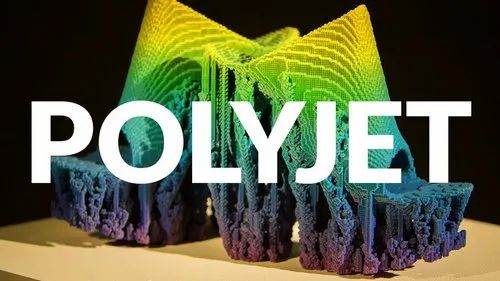 These prototypes include products that need nonslip surfaces, soft-touch grips and handles, gaskets, seals and hoses, and even footwear prototypes for athletes. Also, you can combine rubber-like materials with rigid materials to produce a range of Shore hardness values, from Shore A 27 to A 95.
These prototypes include products that need nonslip surfaces, soft-touch grips and handles, gaskets, seals and hoses, and even footwear prototypes for athletes. Also, you can combine rubber-like materials with rigid materials to produce a range of Shore hardness values, from Shore A 27 to A 95.
4. High-Temperature Materials
With high-temperature Polyjet materials, you get excellent dimensional stability in prototypes and models exposed to heat. You can combine high-temperature materials with rubber-like materials to improve the hardness and flexibility of their insulation. Polyjet high-temperature materials are excellent for functional prototypes that have to withstand a lot of heat or function in strong lighting conditions.
5. Transparent Materials
Polyjet transparent materials are great for prototypes that need see-through parts. You can also add colors to the transparent materials to get an impressive range of tints for your model.
These materials are ideal for prototyping glass products, eyewear and product cases or covers, and other numerous medical applications like contact lenses and clear dental aligners.
6. Rigid Opaque Materials
If you’re looking for the broadest possible range of color options for your prototype, Polyjet rigid opaque materials are worth exploring. When combined with rubber-like materials, they create moving or assembled parts and electronic components. Additionally, they result in products that must feel soft to the touch and appear vibrant for easy identification.
7. Simulated Polypropylene Materials
Simulated Polypropylene materials simulate the qualities and appearance of polypropylene. For example, this type exists in things like product packaging, laboratory equipment, car components, living hinges, sound speakers, and plenty of other applications. If you’re looking to test or exhibit a polypropylene prototype, make it using 3D simulated polypropylene first before going into full production.
8. Biocompatible Materials
Polyjet biocompatible materials meet the approval required for medical use on five key factors.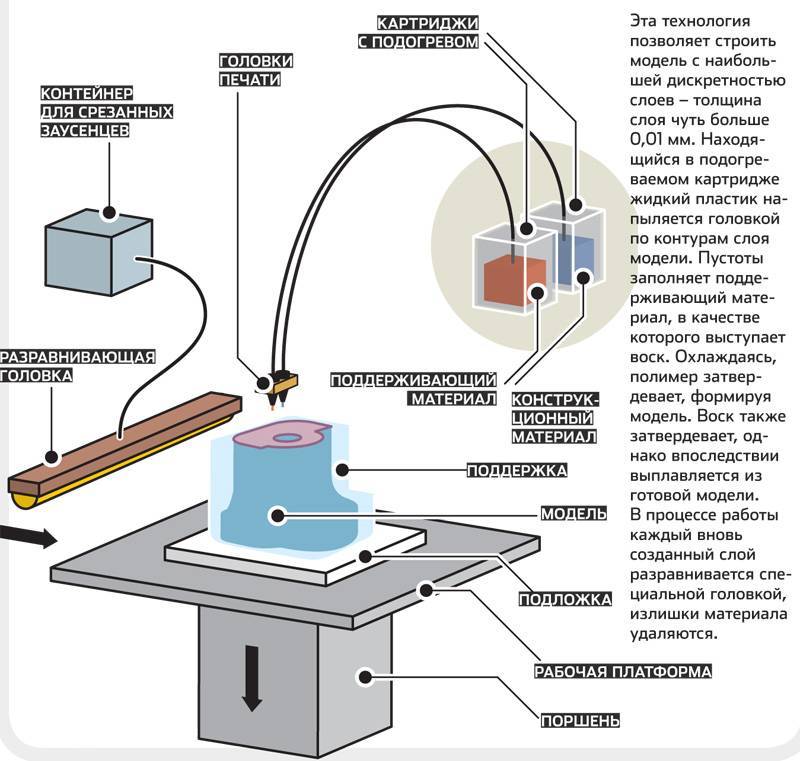 This factor includes genotoxicity, cytotoxicity, delayed hypersensitivity, irritation, and USP plastic Class VI. Using these materials, you can create colorless prototypes that need short-term exposure to mucosa membranes for up to 24 hours. In addition, you can also produce prototypes that will be in contact with the skin for more than 30 days.
This factor includes genotoxicity, cytotoxicity, delayed hypersensitivity, irritation, and USP plastic Class VI. Using these materials, you can create colorless prototypes that need short-term exposure to mucosa membranes for up to 24 hours. In addition, you can also produce prototypes that will be in contact with the skin for more than 30 days.
A wide range of Polyjet 3D printers is available today, from small, compact sizes to large-scale industrial printers. Here are few examples:
Objet30 V5 | Credit: StratasysObjet30 V5 series
The Objet30 V5 series is the smallest, and they come in the Pro and Prime versions. These printers print single materials plus support materials, as does the slightly larger J55 model.
Objet500 Connex1 | Credit: StratasysObjet Connex1 series
Other single-material printers include the Objet Connex1 series that come in the 260 and 500 models.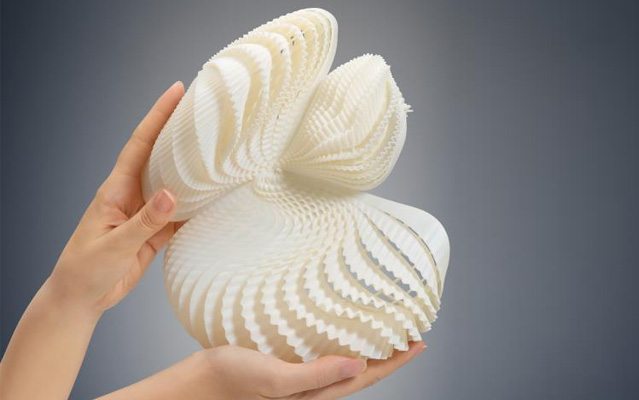 You can print digital materials using the Objet Connex3 series printers (260, 350, and 500 models).
You can print digital materials using the Objet Connex3 series printers (260, 350, and 500 models).
J8 series
This series offers an unlimited number of composite materials and over 500,000 color options. The largest Polyjet printer is the J4100, which allows a maximum model weight of 135kg on the printing plate.
The most highly specialized printer in this series has to be the J750 Digital Anatomy printer which can produce super realistic bone and tissue models. It also uses a gel-like support material that is easy to remove from blood vessel models without altering the delicate prints.
How to Choose
The biggest factor in choosing a Polyjet printer is the materials you want in your prototypes. A compact Polyjet 3D printer is more affordable when using single materials. Moreover, it delivers the best resolution and surface finishes for its size.
If your model requires multiple materials, larger stand-alone Polyjet printers are ideal. This is because they feature multi-jetting technology. There are three main ways to use this hybrid 3D printing feature;
This is because they feature multi-jetting technology. There are three main ways to use this hybrid 3D printing feature;
- You can mix several materials into one model or one part of a model,
- Blend separate materials to create a brand new one, or
- Use mixed trays such that one print run can produce multiple individual parts printed using different materials.
Ultimately, it is your end goal that determines your choice of a Polyjet printer. Are you looking for a delicate, flexible prototype for a surgical implant? Or a series of complex moving parts for a robot? Or an entire fashion brand featuring 3D designs? Polyjet 3D printing can precisely produce what you need faster than other 3D printing options.
Photo by Nino Liverani on UnsplashAdvantages of Polyjet 3D printingPolyjet 3D printing has four significant advantages for product designers, engineers, medical professionals, and artists in their creative and manufacturing processes.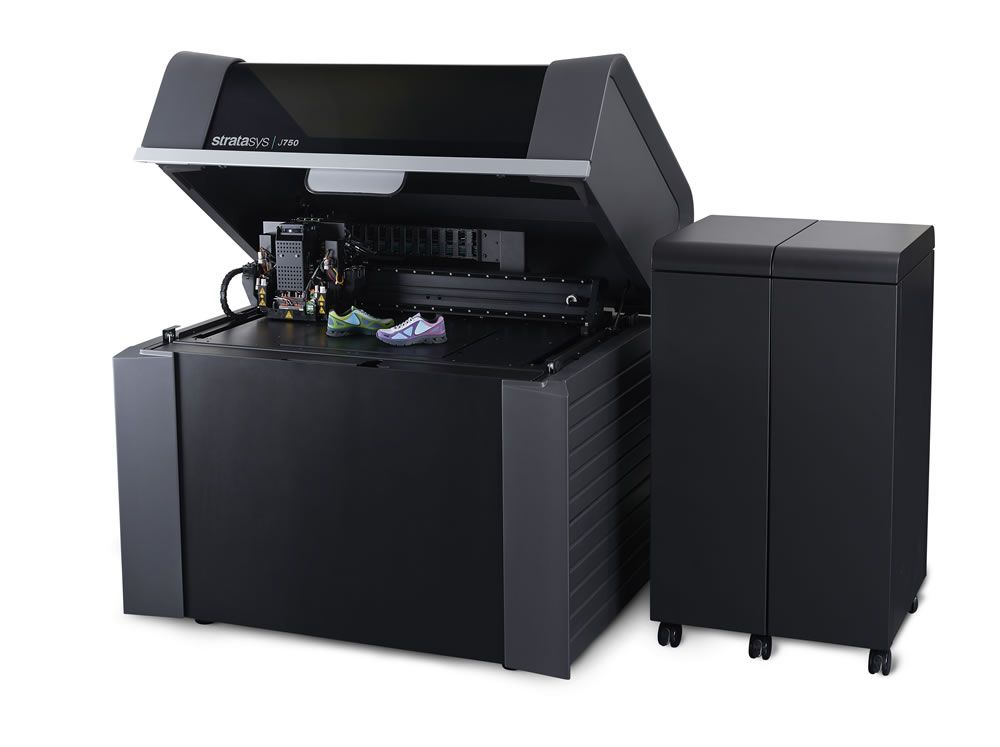
1. Save At Least 50% Of Your Time
We have highlighted that Polyjet printing is fast, and the prototype is ready to use as soon as it’s off the printer. Hybrid printing also means that you can print several objects on one print run or combine several materials into one prototype.
This translates into more time to design, test, and perfect the prototype. Therefore, leads to a quicker route to full-scale manufacturing and marketing.
2. Realistic Models for Medical Applications
Anatomical models used for teaching and planning surgeries must be as close to real-life as possible. The material combinations offered by the Polyjet system can make 3D printed models. These models will not only look realistic but also feel and respond just like the human body.
As a result, this improves the health outcomes of patients because their doctors are better trained. On top of that, their implants and prosthetics are thoroughly tested and simulated beforehand.
3. High Accuracy
The more accurate and detailed a product’s design is 3D printed, the more precise its final prototype will be. Whether you want a perfectly smooth, polished product or complex, intricate details down to the microscopic level, the Polyjet process precisely produces what you need.
4. Multi-Material Capability
Digital materials, which result from mixing multiple types of resins, offer designers and engineers unprecedented creative opportunities. As a result, you can build robust prototypes without losing out on flexibility, textures, or colors. No other 3D printing technology can do this apart from Polyjet.
Now that we have seen what the Polyjet process is all about, it is worth comparing it against two other types of 3D printing, SLA and FDM.
Differences Between Polyjet and SLAStereolithography (SLA) is the oldest technology in the 3D printing industry. The only similarity between SLA and Polyjet is that both use a liquid resin that turns solid when exposed to UV light.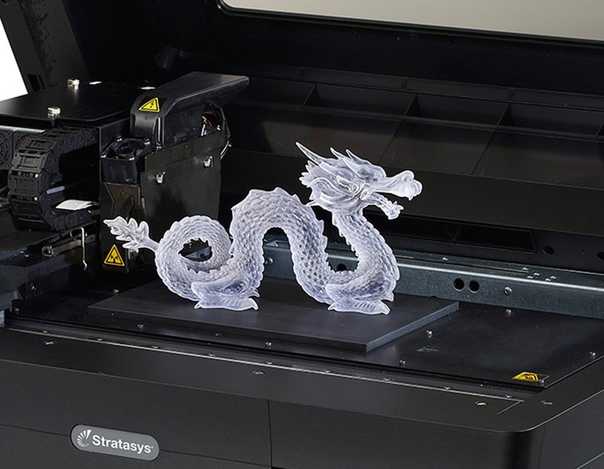 The main difference is in the printing process itself. Whereas, SLA printers extrude the object out of a pool of resin, producing the object upside down. In contrast, Polyjet printers jet the resin onto the build plate, eliminating exposure to hazardous resins and building the object from the bottom up.
The main difference is in the printing process itself. Whereas, SLA printers extrude the object out of a pool of resin, producing the object upside down. In contrast, Polyjet printers jet the resin onto the build plate, eliminating exposure to hazardous resins and building the object from the bottom up.
Moreover, SLA printers work with a single material per print run. On the other hand, Polyjet allows multiple materials and multiple objects per print run.
SLA models also print breakaway support materials, which require sandblasting or washing in an alcohol bath during post-curing. However, the gel-like support materials produced in the Polyjet process are removable by hand or water, saving time on post-curing.
Differences Between Polyjet and FDMBoth fused deposition modeling (FDM) and Polyjet printers build models layer by layer. However, FDM printers deposit heated thermoplastic filaments on the printer bed that cool and solidify to create these layers. In contrast, Polyjet printers use liquid photopolymers cured using UV light.
In contrast, Polyjet printers use liquid photopolymers cured using UV light.
FDM also uses a limited number of materials, mainly ABS, ASA, PC-ABS, and polycarbonate. On the contrary, Polyjet uses unique digital materials for a broader range of applications.
FDM materials are in a semisolid state during 3D printing. However, the finished models are generally sturdier and more durable but are limited in their flexibility and detail. Differently, Polyjet printing delivers more details because the resins are in a liquid state.
Factors to Consider When Using Polyjet 3D TechnologyPolyjet technology applies to many products. This includes prosthetics, implants, mobility aids for healthcare, architectural models, robotics prototypes, interlocking structures and tools in the industrial manufacturing sector, and bespoke designs for cars, bikes, and airplanes parts.
With all these options on the table, it’s essential to understand which materials and processes are best for each product type. So far, we have discussed the features and advantages of Polyjet printing, so let’s consider the four main questions to determine if Polyjet printing is suitable for you.
So far, we have discussed the features and advantages of Polyjet printing, so let’s consider the four main questions to determine if Polyjet printing is suitable for you.
How Will Your 3D Model Be Used?
Before printing your 3D model, keep in mind the end use or purpose of the product. Polyjet technology is best known for the level of flexibility and intricate details it offers. Therefore, it lends itself to medical applications and geometric designs for mechanical parts.
Nevertheless, if aesthetics is a key factor, for example, in creating product packages, footwear, eyewear, or artistic exhibitions, Polyjet is the best option. If you need a combination of robustness and aesthetics, you can strike this balance with the Polyjet process.
Which Material Is Best?
Before Polyjet technology, early 3D printers relied on a single material, usually plastics. The reason is, it produced rigid, sturdy products with a limited range of color options.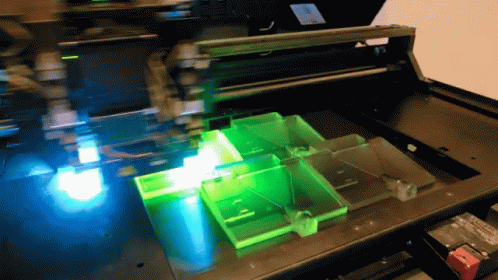
Now, Polyjet frees you to explore textures, colors, and flexibility. As a result, it will enable your end product to meet and exceed end-user expectations. Do consider the cost of producing digital materials because single materials are generally more affordable than hybrid materials.
Which Is the Best Type of Surface Finish?
Tools and components for mechanical or industrial applications require a different type of finish from medical parts or packaging products. For pieces that snap to fit, a smooth finish is excellent. At the same time, a nonslip finish is best for handheld products, mobility aids, and footwear.
Polyjet allows a maximum part size of 19.3 x 15.35 x 7.9 inches in a single print run. Consequently, for any parts larger than this, you can design separately and then fit together seamlessly after printing. Factor in the support materials in the CAD design to understand how to work within the dimensions of Polyjet printers.
ConclusionPolyjet 3D printing combines liquid digital materials and dissolvable support materials with faster printing speeds to produce quality prototypes. This technology gives the finest resolution of all 3D printing technologies. Therefore, you can integrate smaller, more detailed patterns into each design. Additionally, one Polyjet prototype can feature different Shore hardness ranges, multiple materials, and a gamut of brilliant colors.
This technology gives the finest resolution of all 3D printing technologies. Therefore, you can integrate smaller, more detailed patterns into each design. Additionally, one Polyjet prototype can feature different Shore hardness ranges, multiple materials, and a gamut of brilliant colors.
Ready to bring your CAD design to life? Get in touch with Jiga for a quick, comprehensive quote. We also give you access to Polyjet 3D printing professionals that will get your prototype ready in no time. Contact Jiga today.
Check out our FREE 3D CAD Viewer for Gmail
PolyJet 3D printing technology
PolyJet is a 3D printing technology based on the layer-by-layer curing of a liquid photopolymer material under the influence of ultraviolet radiation. Used in Stratasys 3D printers.
- The principle of operation
- Advantages
- Examples of print
- Select 3D printer
- Principle of operation
- Advantages 9000
- Seal
- Select 3D printer
What is better to print: product prototypes, test models, burnt-out master models, silicone casting samples.
Advantages: high surface quality, accuracy, construction speed, washable support.
Alternative: MJM technology (also based on UV illumination of photopolymer material).
What is better to print: product prototypes, test models, burnt master models, silicone casting samples. nine0003
Advantages: high surface quality, accuracy, construction speed, washable support.
Alternative: MJM technology (also based on UV illumination of photopolymer material).
How it works
The 3D printer print unit sprays the model material and support material in thin layers (16/30 µm) according to the data of the 3D mathematical model. Each layer is polymerized by ultraviolet light immediately after application. The result is an object that does not require any additional surface treatment. A model printed using PolyJet technology can be used immediately after the printing process is completed. nine0003
nine0003
How it works
The 3D printer print unit sprays the model material and support material in thin layers (16/30 µm) according to the data of the 3D mathematical model. Each layer is polymerized by ultraviolet light immediately after application. The result is an object that does not require any additional surface treatment. A model printed using PolyJet technology can be used immediately after the printing process is completed.
Technology Benefits
Accuracy and detail of finished products
PolyJet technology provides a high accuracy of construction in 0.02-0.085 mm for objects up to 50 mm in size. For objects larger than 50 mm, the construction accuracy varies from 0.1 to 0.2 mm. Printing accuracy depends on the geometry of the model, the parameters of its construction and orientation, as well as the material used.
Large selection of materials with different properties
PolyJet grown objects have different properties depending on the material used. Materials differ from each other in mechanical, thermal, electrical and chemical characteristics. The FullCure line of PolyJet printing media offers a choice of rigid, flexible, translucent, transparent, and certified biocompatible media. nine0003
Materials differ from each other in mechanical, thermal, electrical and chemical characteristics. The FullCure line of PolyJet printing media offers a choice of rigid, flexible, translucent, transparent, and certified biocompatible media. nine0003
Soluble support material
In the process of building complex products, various cavities, overhanging structures are often present. To prevent their collapse, all voids under such elements are filled with a special material - support material. In addition, such material serves as additional insurance when printing thin walls and complex structures. FullCure705 Support is a versatile model support material that can be easily removed with water in an ObjetWaterJet flush station. nine0003
Benefits of Technology
Accuracy and Finished Product Details
PolyJet technology delivers high build accuracy of 0.02-0.085 mm for objects up to 50 mm in size. For objects larger than 50 mm, the construction accuracy varies from 0. 1 to 0.2 mm. Printing accuracy depends on the geometry of the model, the parameters of its construction and orientation, as well as the material used.
1 to 0.2 mm. Printing accuracy depends on the geometry of the model, the parameters of its construction and orientation, as well as the material used.
Large selection of materials with different properties
PolyJet grown objects have different properties depending on the material used. Materials differ from each other in mechanical, thermal, electrical and chemical characteristics. The FullCure line of PolyJet printing media offers a choice of rigid, flexible, translucent, transparent, and certified biocompatible media. nine0003
Soluble support material
In the process of building complex products, various cavities, overhanging structures are often present. To prevent their collapse, all voids under such elements are filled with a special material - support material. In addition, such material serves as additional insurance when printing thin walls and complex structures. FullCure705 Support is a versatile model support material that can be easily removed with water in an ObjetWaterJet flush station. nine0003
nine0003
3D printers operating using Polyjet
Stratasys J35 Pro
Stratasys J555 Prime
StratASS J35 9000 9000
STRATASIS J5559 PREME Photopolymer 3D printing
Your city: Moscow
Right?
× Choose the city closest to you:
Moscow Saint Petersburg Vladivostok Novosibirsk Ekaterinburg Kazan Nizhny Novgorod Chelyabinsk Omsk Rostov-on-Don Samara Krasnoyarsk Voronezh Perm
Volgograd Krasnodar Saratov Tyumen Tolyatti Izhevsk Barnaul Ulyanovsk Irkutsk Khabarovsk Makhachkala Yaroslavl
▼ Show more
Deselect
PolyJet - Stereolithography (SLA) - An additive manufacturing technology similar to inkjet printing, but instead of inkjet on paper, PolyJet 3D printers emit streams of liquid photopolymer that forms layers on the build tray. A 3D printer applies and fixes small portions of a liquid photopolymer using UV radiation. Thin layers are laid down sequentially in the build tray and form one or more 3D models or parts. If support is required for certain parts, the 3D printer applies a removable support material. Auxiliary material is easily removed by hand, water or in a special solvent. Models and parts are ready to use immediately upon removal from the 3D printer, no additional photopolymerization is required. nine0003
Thin layers are laid down sequentially in the build tray and form one or more 3D models or parts. If support is required for certain parts, the 3D printer applies a removable support material. Auxiliary material is easily removed by hand, water or in a special solvent. Models and parts are ready to use immediately upon removal from the 3D printer, no additional photopolymerization is required. nine0003
PolyJet technology enables high precision manufacturing, and the ability to use different materials makes prototypes as close to the final product as possible.
SLA is the first 3D printing technology - it was patented back in 1986. When parts with very high precision or a smooth surface are required, SLA is the most cost-effective 3D printing technology.
Main advantages of PolyJet technology:
- High precision and detail
- Surface smoothness - ideal for prototyping
- Full spectrum CMYK color palette
- Possibility to combine materials
Recommended Equipment
- 3D Equipment
- Consumables
3D Equipment
Consumables
Application for 3D scanning
I have read the Privacy Policy and agree to the processing of my personal data.